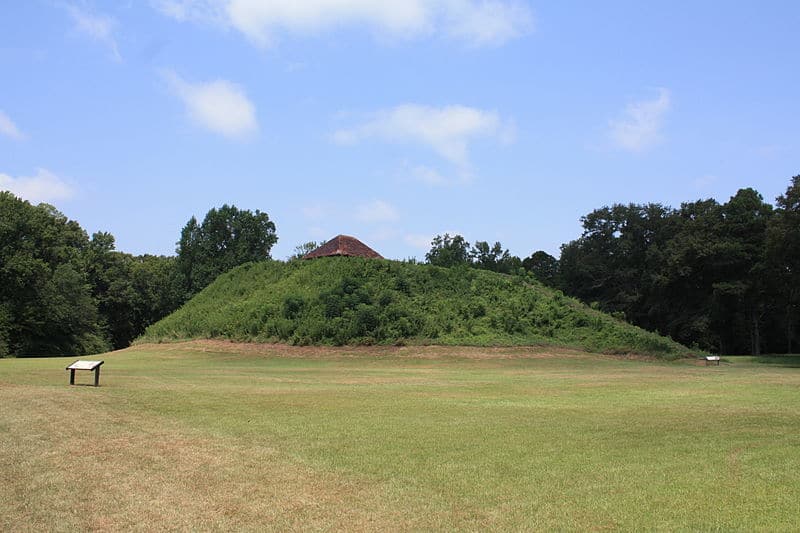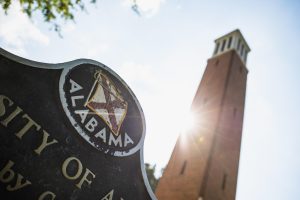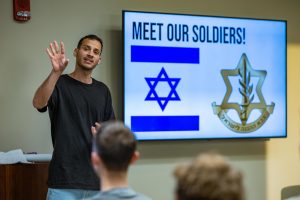UA yet to return thousands of Native American remains
February 15, 2023
The University of Alabama Museums has the tenth-largest collection of unreturned Native American remains in the U.S. and does not currently employ a Native American Graves Protection and Repatriation Act coordinator to facilitate return efforts.
A ProPublica data initiative launched on Jan. 11 revealed that the University is in possession of over 2,900 native remains that have not yet been made available for return.
As of 2022, the University has made 78% of the more than 13,600 of the remains reported to the government available for return to tribes. However, the University reported still having the remains of 2,900 Native Americans, and 3,900 funerary objects that it has not yet made available for return.
In 1990, Congress published the Native American Graves Protection and Repatriation Act. This act requires institutions that receive federal funding to provide information about Native American cultural items, and requires that they are made available for disposition or repatriation, meaning that items that which belong to Native Americans are given back to them.
“The law was designed with certain intent, but then the way it gets applied is not always consistent with that intent,” said Catheine Smith, NAGPRA coordinator for the Florida Museum of Natural History. “Some of that could be the logistics of the way things are described, and sometimes there’s intentional delays or just not following the law.”
The University has returned 80% of Native American remains to tribes in Alabama, but also possesses remains from Texas, Arkansas, Georgia and Florida, where they have yet to return any.
“To honor and preserve historical and cultural heritage, the proper care of artifacts and ancestral remains of Muskogean-speaking peoples has been and will continue to be imperative to UA,” Monica Watts, Associate VP of Communications at the University, said in a statement to ProPublica available on the database. “Out of respect for the tribes, the culturally sensitive nature of the process, and given our agreement with the tribes to maintain confidentiality in the ongoing consultation process, we can only reiterate that we look forward to continuing our productive work with the tribes on appropriate repatriation efforts in compliance with the Native American Graves Protection and Repatriation Act.”
Moundville Archaeological Park, the site where the Chocktaw, Chickasaw, Muscogee and Seminole tribes lived, is now a park operated by The University of Alabama Museums in Moundville, AlabamaL. The park is about 20 minutes from Tuscaloosa and the University’s campus. It was a significant area in Native American culture, specifically to the Mississippian tribes, as their artifacts were first discovered along the Mississippi River. The park opened in 1939, and since then, there have been tens of thousands of Native American artifacts found.
Other SEC schools, such as Florida, Tennessee and Kentucky also rank in the top 12 institutions that have the largest collection of unrepatriated Native American remains in the U.S. While Kentucky ranks No. 6 among universities with the most unreturned Native American remains, the UK College of Arts and Sciences has invested $889,188 to repatriate Native American remains in Kentucky.
The University of Florida holds the 11th largest collection of Native American remains, but hired archeologist Catherine Smith as their first full-time repatriation coordinator, or NAGPRA coordinator. In 2008, UF made hundreds of remains available for repatriation, but still possessed thousands. Smith’s job is to inventory all of these remains and help return them to the proper tribes.
The University of Alabama has yet to create a NAGPRA coordinator role, but tribes are hopeful they can get their artifacts and remains back.
“After an initial search for a NAGPRA coordinator, UA increased the responsibilities for the position and made it Curator and Director, NAGPRA Program,” said Shane Dorrill, UA assistant director of communications. “That search remains ongoing.”
In April 2022, the University posted a job application for a NAGPRA coordinator but has since removed it. The posting is still available on several sites including Southeastern Archaeology, Association of Academic Museums and Galleries, and the Society for American Archaeology. While there is no federal requirement that institutions have a NAGPRA coordinator, other SEC schools such as Auburn, Florida, Tennessee and Kentucky each employ one.
In a response to a request for comment sent by the The Crimson White on Feb. 8, Dorrill supplied the same statement originally provided to ProPublica, citing the University’s commitment to “appropriate repatriation efforts” in order with NAGPRA.
“To honor and preserve historical and cultural heritage, the proper care of artifacts and ancestral remains of Muskogean-speaking peoples has been and will continue to be imperative to UA,” said Dorrill. “Out of respect for the tribes, the culturally sensitive nature of the process, and given our agreement with the tribes to maintain confidentiality in the ongoing consultation process, we can only reiterate that we look forward to continuing our productive work with the tribes on appropriate repatriation efforts in compliance with the Native American Graves Protection and Repatriation Act.”
In 2021, seven tribes, including the Chocktaw Nation of Oklahoma, the Chickasaw Nation, the Coushatta Tribe of Louisiana, Muscogee (Creek) Nation, Alabama-Quassarte Tribal Town, Seminole Nation of Oklahoma and the Seminole Tribe of Florida sent a request to the University under NAGPRA to return their remains and artifacts from Moundville Archeological Park.
“The evidence presented in this claim establishes beyond any reasonable doubt that the Muskogean-speaking Tribes are culturally affiliated with the Moundville archaeological site,” says the claim sent to UA. “Moundville is at least as closely affiliated with the Muskogean-speaking Tribes as Plymouth Colony is to the United States.”
An article previously published by The Crimson White revealed that several of the artifacts were stored in paper bags in an unknown site on campus. While Dorrill said this was a standard method of storing artifacts, some Muscogee people find it inappropriate.
“Today, UA’s osteological collections are housed in conservation-approved materials (acid-free paper bags), and secured in enclosed metal cabinets in an access- and temperature-controlled building,” Dorrill said in the previous article by The CW.
Dorrill said the University is currently consulting about repatriations with the seven tribes. He says the most recent and ongoing consultation began in 2021.
“And then if somebody asked for their grandma back and we said no, there’s too much red tape,” said Del Beaver, the second chief of the Muscogee Creek Nation, in a statement to al.com, in November 2021. “Just give us our people back.”





















